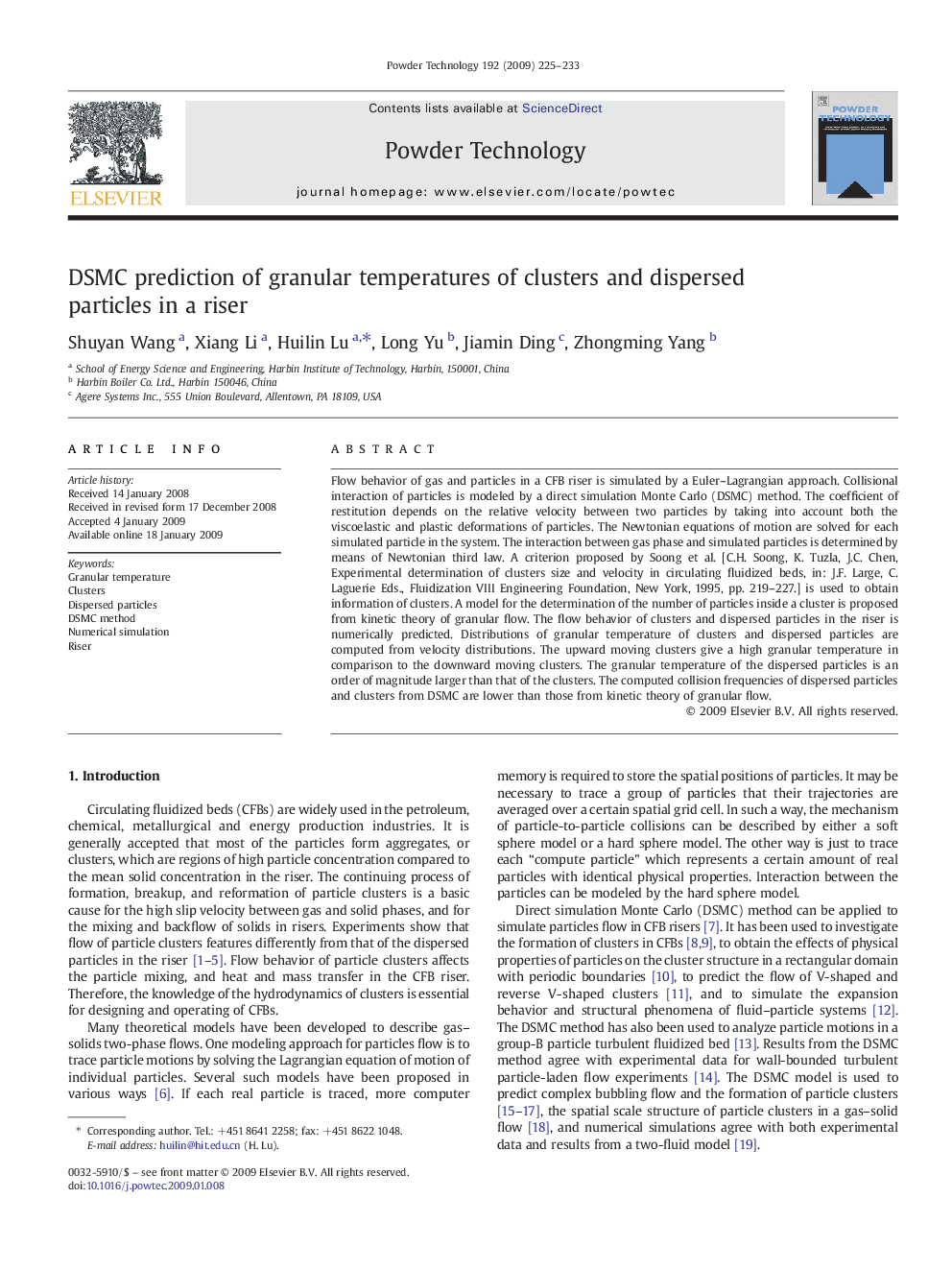| کد مقاله | کد نشریه | سال انتشار | مقاله انگلیسی | نسخه تمام متن |
|---|---|---|---|---|
| 238045 | 465738 | 2009 | 9 صفحه PDF | دانلود رایگان |

Flow behavior of gas and particles in a CFB riser is simulated by a Euler–Lagrangian approach. Collisional interaction of particles is modeled by a direct simulation Monte Carlo (DSMC) method. The coefficient of restitution depends on the relative velocity between two particles by taking into account both the viscoelastic and plastic deformations of particles. The Newtonian equations of motion are solved for each simulated particle in the system. The interaction between gas phase and simulated particles is determined by means of Newtonian third law. A criterion proposed by Soong et al. [C.H. Soong, K. Tuzla, J.C. Chen, Experimental determination of clusters size and velocity in circulating fluidized beds, in: J.F. Large, C. Laguerie Eds., Fluidization VIII Engineering Foundation, New York, 1995, pp. 219–227.] is used to obtain information of clusters. A model for the determination of the number of particles inside a cluster is proposed from kinetic theory of granular flow. The flow behavior of clusters and dispersed particles in the riser is numerically predicted. Distributions of granular temperature of clusters and dispersed particles are computed from velocity distributions. The upward moving clusters give a high granular temperature in comparison to the downward moving clusters. The granular temperature of the dispersed particles is an order of magnitude larger than that of the clusters. The computed collision frequencies of dispersed particles and clusters from DSMC are lower than those from kinetic theory of granular flow.
Granular temperatures of clusters and dispersed particles are computed from velocity distributions. The granular temperature of the dispersed particles is an order of magnitude larger than that of the clusters. However, the fluctuating energy of cluster is larger than that of dispersed particle due to particle agglomerating.Figure optionsDownload as PowerPoint slide
Journal: Powder Technology - Volume 192, Issue 2, 5 June 2009, Pages 225–233